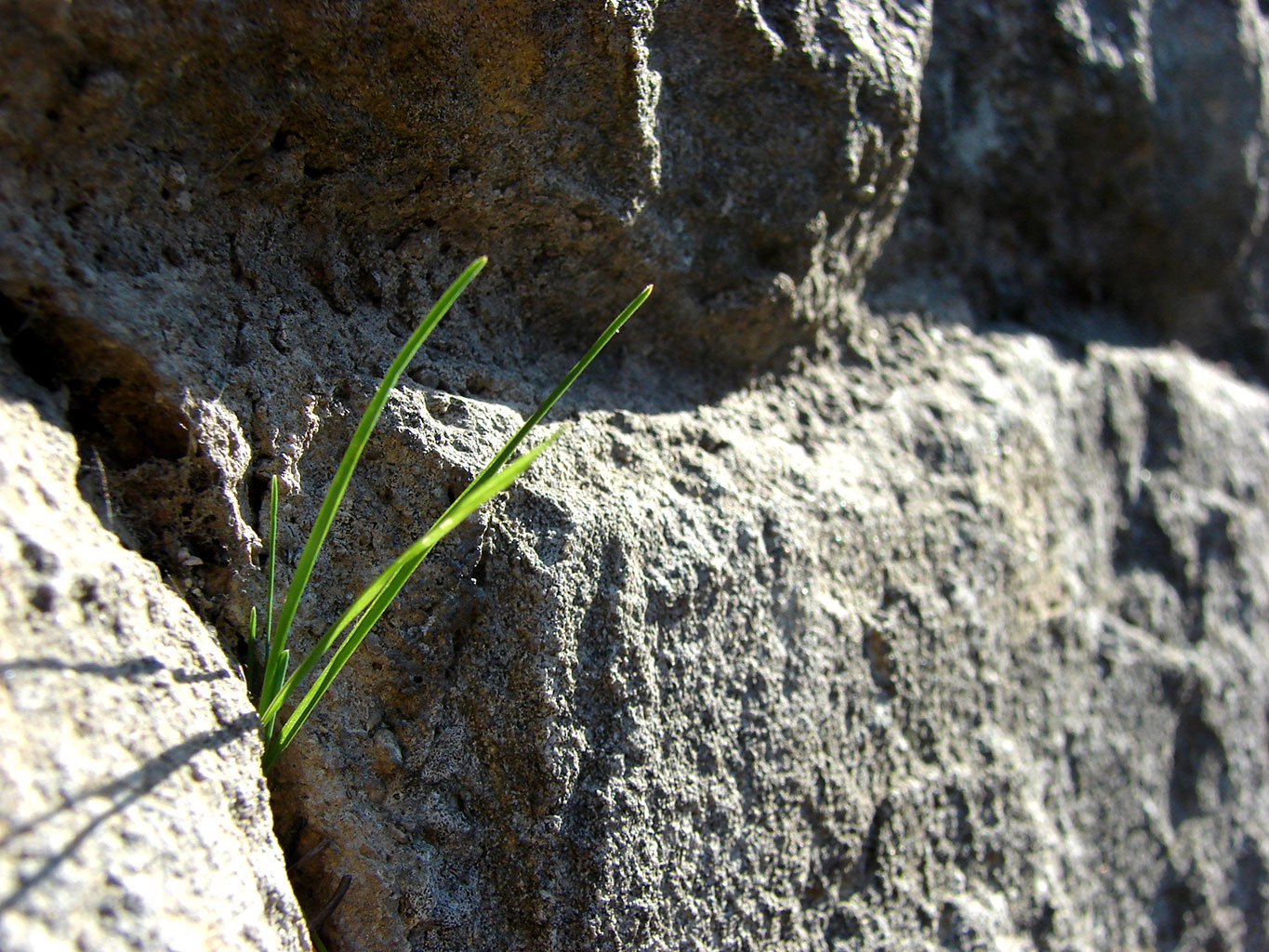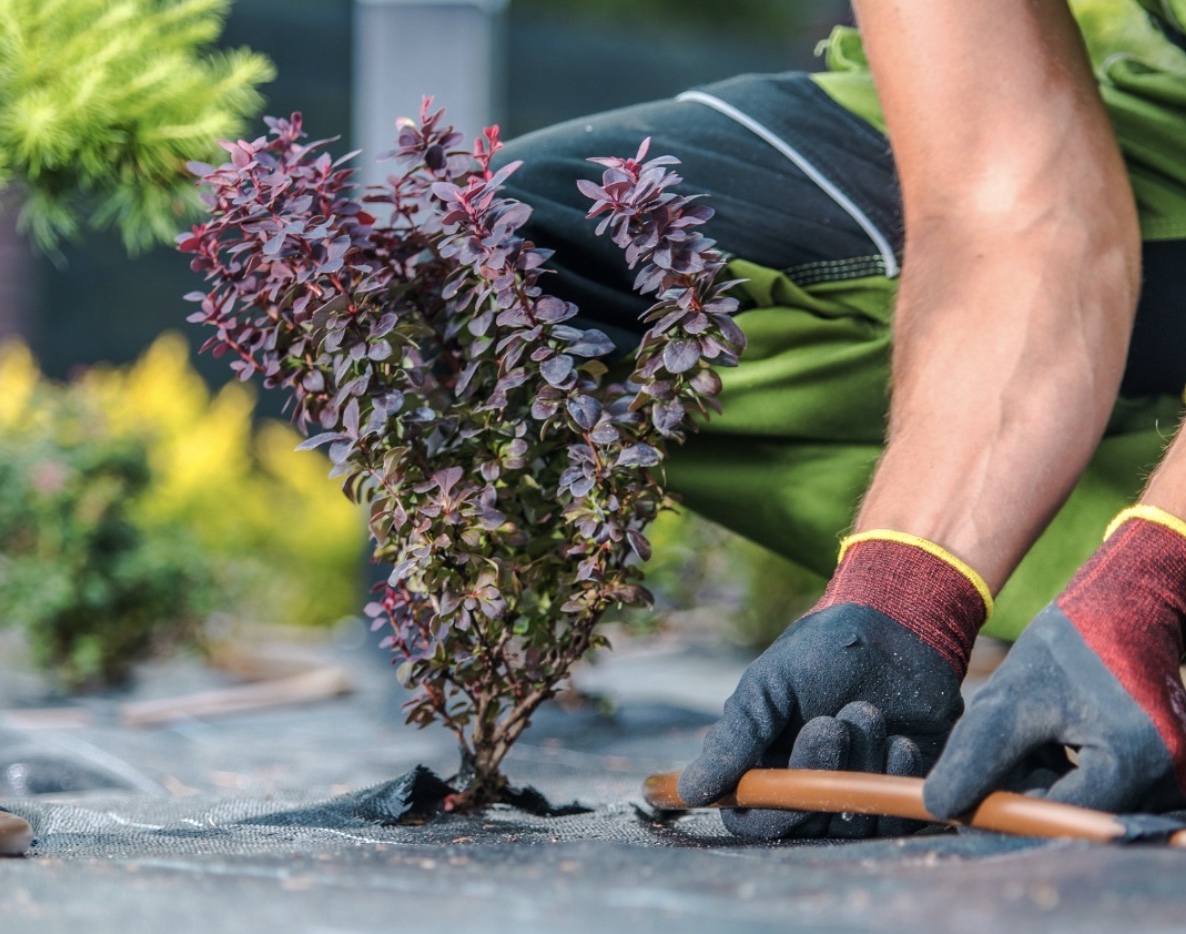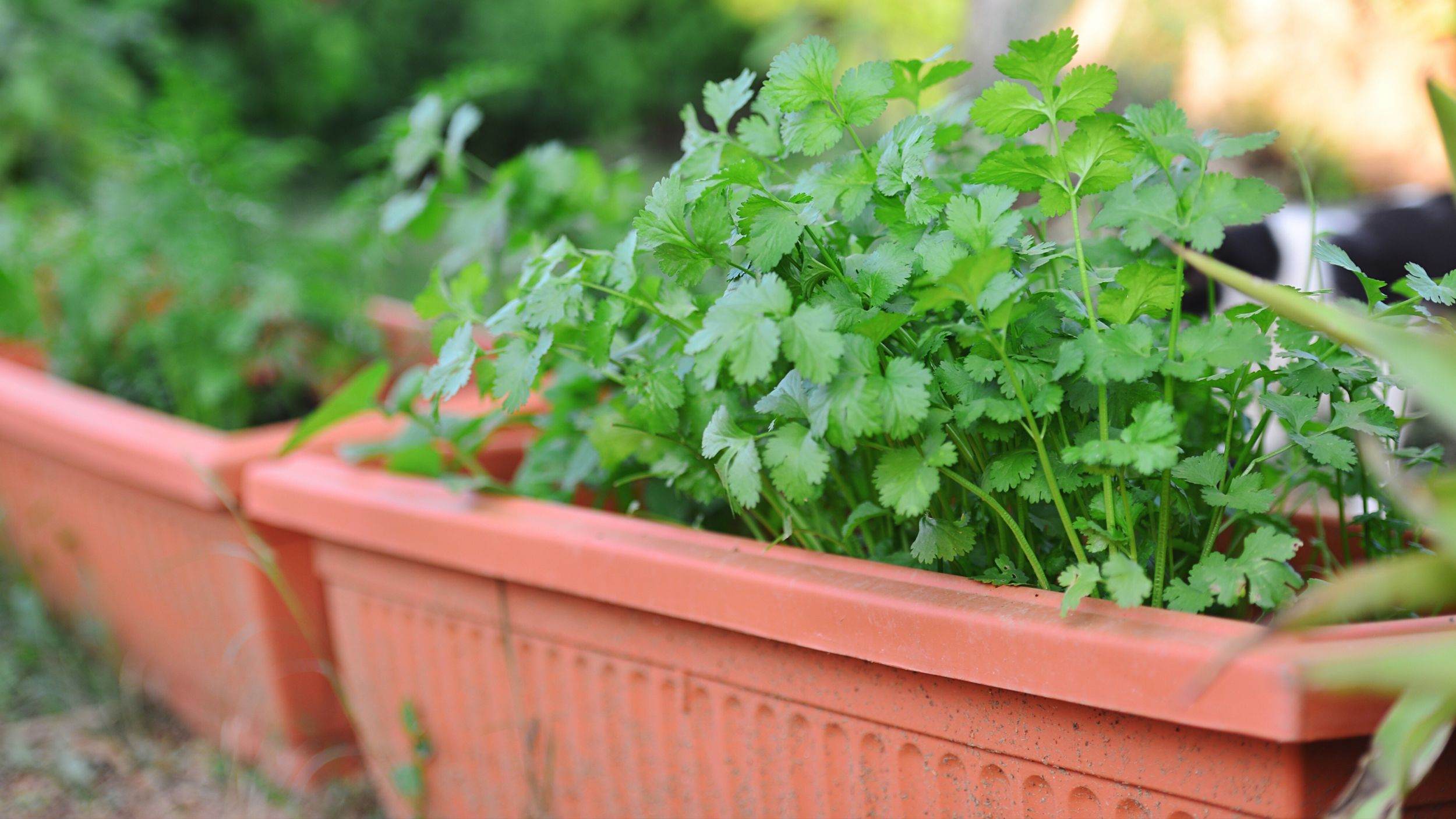Home>Gardening Tips and Tricks>Problem Solving>How To Prevent Weeds From Growing In Rocks


Problem Solving
How To Prevent Weeds From Growing In Rocks
Published: December 15, 2023
Looking for Problem Solving tips on how to prevent weeds from growing in rocks? Discover effective methods and solutions in our comprehensive guide.
(Many of the links in this article redirect to a specific reviewed product. Your purchase of these products through affiliate links helps to generate commission for Chicagolandgardening.com, at no extra cost. Learn more)
Table of Contents
- Introduction
- Understanding the Problem: Why Weeds Grow in Rocks
- Removing Existing Weeds in Rocks
- Creating a Physical Barrier to Prevent Weed Growth
- Using Weed Control Fabric in Rock Gardens
- Applying Herbicides to Prevent Weed Growth in Rocks
- Natural Weed Control Methods for Rocks
- Regular Maintenance Techniques for Weed Prevention
- Conclusion
Introduction
Welcome to our comprehensive guide on how to prevent weeds from growing in rocks. Weeds can be a persistent problem, and when they start sprouting up in your rock areas, they can quickly become an eyesore and overtake your carefully designed landscape. Not only are weeds unsightly, but they also compete with your desired plants for nutrients, sunlight, and space, potentially causing damage to your garden. If left unchecked, weeds can quickly spread and become a major headache to deal with.
Fortunately, there are effective methods to prevent weeds from taking root in your rock areas. From physical barriers and weed control fabric to herbicides and natural weed control methods, we will explore various techniques and maintenance practices to keep your rock garden weed-free.
This guide is designed to provide you with practical tips and solutions on how to stop weeds from growing in rocks. Whether you have a small rock garden or a larger landscape with rocky terrain, these strategies and best practices will help you maintain a weed-free environment and showcase the natural beauty of your rocks.
It is essential to understand why weeds tend to grow in rocks in the first place. By understanding the causes, you can develop effective strategies to prevent weed growth and save yourself the time and effort of constantly battling unwanted plants.
So, if you’re ready to reclaim your rock areas and maintain a weed-free landscape, let’s dive in and explore the various methods and techniques to prevent weeds from growing in rocks.
Understanding the Problem: Why Weeds Grow in Rocks
Before we delve into the methods of preventing weeds from growing in rocks, let’s first understand why this is a common problem in gardens and landscapes. Weeds are opportunistic plants that can thrive in various environments, including rocky areas. There are several reasons why weeds tend to establish themselves in rock gardens:
- Soil Retention: Rocks and gravel create crevices and gaps where soil can accumulate. Over time, wind, rain, and other factors can deposit organic matter, allowing weed seeds to take root and grow.
- Moisture Retention: Rocks can absorb and retain moisture, creating a favorable environment for weed seeds to germinate and grow.
- Protection from Disturbances: The rough texture of rocks can provide protection and shelter for weed seeds, shielding them from being disturbed by erosion, foot traffic, or gardening activities.
- Seed Dispersal: Weeds produce large quantities of seeds that can easily be spread by wind, animals, or garden tools. These seeds can find their way into the crevices of rocks and quickly establish themselves.
- Nutrient Availability: Even though rocks don’t provide significant nutrients for plant growth, they can still trap and store organic matter, which can gradually break down and release nutrients that weeds can utilize.
Understanding these factors helps us develop effective strategies to prevent weed growth in rocks. By addressing these underlying causes, we can create an environment where weeds struggle to establish themselves and compete with our desired plants.
In the upcoming sections, we will explore various methods, both physical and chemical, that can be employed to keep weeds at bay in your rock gardens. It’s important to choose a combination of approaches that align with your preferences, budget, and the level of maintenance you are willing to invest.
So, now that we have a clear understanding of why weeds tend to grow in rocks, let’s move on to the action steps you can take to remove existing weeds and prevent future weed growth in your rock areas.
Removing Existing Weeds in Rocks
Before implementing any preventative measures, it’s important to start by removing existing weeds in your rock areas. This will provide a clean slate for your weed prevention efforts and help to eliminate any potential sources of weed seeds.
Here are some effective methods for removing existing weeds in rocks:
- Hand Pulling: For small infestations, hand pulling can be an effective and environmentally friendly method. Simply grab the weed at the base, close to the soil level, and gently pull upwards, making sure to remove the entire root system. Use a hand trowel or weeding tool for more stubborn or deeply rooted weeds.
- Weed Torch: If you have a larger area to tackle or find it difficult to hand pull weeds, a weed torch can be a useful tool. The intense heat from the torch will effectively kill the weeds, including the roots. However, exercise caution and follow safety guidelines when using a weed torch to prevent accidental fires and damage to surrounding plants.
- Vinegar Solution: Another natural and non-toxic option is to use a vinegar solution. Mix equal parts of vinegar and water, add a few drops of dish soap, and spray the solution directly on the weeds. The acetic acid in vinegar will dehydrate and kill the weeds. Be careful only to target the weeds and avoid spraying desirable plants.
- Boiling Water: Boiling water can also be an effective method for killing weeds. Carefully pour boiling water directly on the weeds, ensuring it reaches the root zone. This method is particularly useful for weeds growing between rocks or in cracks where it’s challenging to use other removal techniques.
After removing the existing weeds, it’s important to dispose of them properly to prevent reseeding. Either seal them in a bag and discard them in the trash or add them to a compost pile if the compost reaches high temperatures that can kill weed seeds.
By taking the time to remove existing weeds, you’ll significantly reduce the weed population in your rock areas and give yourself a much better chance of successful weed prevention.
Now that we’ve tackled the initial step of removing existing weeds, let’s move on to the methods of creating physical barriers to prevent weed growth in rocks.
Creating a Physical Barrier to Prevent Weed Growth
One effective method to prevent weed growth in rocks is to create a physical barrier that inhibits weeds from taking root and spreading. These barriers can be installed before or after the rocks are in place, depending on your specific situation and preferences.
Here are a few options for creating physical barriers:
- Landscape Fabric: Landscape fabric, also known as weed control fabric or geotextile, is a popular choice for creating a barrier against weeds. It is a breathable fabric that allows water and airflow while blocking sunlight, a crucial element for weed germination. Lay the fabric over the prepared soil surface, making sure to overlap the edges and secure it with landscape staples. Cut slits or X-shaped openings in the fabric to accommodate the desired plants, allowing them to grow while keeping weeds at bay.
- Cardboard or Newspaper: An affordable and eco-friendly alternative to landscape fabric is using cardboard or layers of newspaper as a barrier. Wet the cardboard or newspaper to make it more pliable, then lay it directly on the soil surface. Overlap the edges to create a continuous barrier, and cover it with a layer of rocks. The cardboard or newspaper acts as a barrier, preventing sunlight from reaching weed seeds and promoting decomposition over time. This method works particularly well for suppressing weeds during the initial stages of creating a rock garden.
- Plastic Sheeting: Another option is to use plastic sheeting as a physical barrier. Clear plastic sheeting allows sunlight to penetrate the soil, heating it and sterilizing any weed seeds present. Black plastic sheeting, on the other hand, blocks sunlight and creates a suffocating environment for weeds. Secure the plastic sheeting with landscape staples, ensuring it covers the entire intended area, and cut openings for desired plants. Keep in mind that plastic sheeting may not be as aesthetically pleasing as other options, so it may be more suitable for areas less visible or temporary garden projects.
Regardless of the physical barrier you choose, it’s essential to regularly inspect and maintain it. Over time, debris, leaf litter, or windblown soil may accumulate on top of the barrier, providing an opportunity for weeds to establish themselves. Regularly remove any debris and inspect for any gaps or tears that may compromise the barrier’s effectiveness.
Creating a physical barrier is a proactive measure that significantly reduces the chances of weed growth in your rock areas. Combine it with other preventative methods, such as weed control fabric and maintenance practices, for optimal weed prevention.
Next, we’ll explore using weed control fabric specifically designed for rock gardens as an additional measure to prevent weed growth.
Using Weed Control Fabric in Rock Gardens
Weed control fabric, also known as landscape fabric, is an effective tool for preventing weed growth in rock gardens. Designed to create a barrier between the soil and rocks, it prevents weed seeds from germinating and penetrating the surface. Implementing weed control fabric in your rock garden can significantly reduce the need for ongoing weed management and maintenance.
Here are the steps to using weed control fabric in rock gardens:
- Prepare the Area: Start by clearing the rock garden area of any existing weeds or debris. Rake the soil surface to create a smooth and even base.
- Measure and Cut: Measure the area to determine the amount of weed control fabric needed. Cut the fabric to the appropriate size, allowing for overlapping at the edges.
- Secure the Fabric: Lay the weed control fabric over the prepared soil surface. Ensure that it covers the entire area, including the spaces between rocks. Use landscape staples to secure the fabric at regular intervals, ensuring it stays in place.
- Create Openings: Use a utility knife or scissors to make X-shaped or straight-line cuts in the fabric where you want to plant desired plants. Start small and adjust as necessary to accommodate the size of the plant.
- Planting and Mulching: Plant your desired plants through the openings in the fabric, making sure to place them at the appropriate depth and spacing. Add a layer of mulch on top of the fabric to enhance aesthetics and further suppress weed growth.
- Maintenance: Regularly monitor the rock garden for any signs of weed growth and remove any weeds that manage to sprout in the small openings. Additionally, check the fabric for any damage or gaps that may compromise its effectiveness and repair as needed.
Weed control fabric is widely available in different materials, such as woven or non-woven polypropylene, and varying thicknesses. Choose a fabric that is specifically designed for use in rock gardens, as it should be durable, breathable, and resistant to degradation from sunlight and weather exposure.
While weed control fabric is an effective preventative measure, it’s important to note that it is not foolproof. Weeds may still find their way through gaps or tears in the fabric, or they may take root in the layer of mulch on top. Regular maintenance and inspections are crucial to ensure the fabric remains intact and effective.
In the next section, we will explore the use of herbicides as an additional strategy to prevent weed growth in rocks.
Applying Herbicides to Prevent Weed Growth in Rocks
When it comes to preventing weed growth in rocks, herbicides can be a valuable tool in your weed management strategy. Herbicides work by targeting and killing weeds, reducing their ability to compete with desired plants for space, nutrients, and sunlight. It’s important to note that herbicides should be used judiciously and according to label instructions to minimize any potential impact on the environment and non-target plants.
Here are some key considerations when utilizing herbicides to prevent weed growth in rocks:
- Selecting the Right Herbicide: Different herbicides are formulated to target specific types of weeds. Select a herbicide that is labeled for use on the types of weeds commonly found in your rock garden. Read the label carefully to understand its target weeds, application rate, timing, and any precautions or restrictions.
- Pre-Emergent vs. Post-Emergent Herbicides: Pre-emergent herbicides are applied before weed seeds germinate, creating a barrier in the soil to prevent their emergence. Post-emergent herbicides are applied directly to actively growing weeds. Depending on the weed species and your specific needs, you may choose to use a combination of pre-emergent and post-emergent herbicides for optimal control.
- Application Technique: Follow the instructions provided by the herbicide manufacturer for the correct application technique. Most herbicides recommend a targeted spray application. Be careful to avoid overspray onto desirable plants, as herbicides can harm or kill non-target vegetation.
- Safety Precautions: Prioritize safety when using herbicides. Wear protective clothing, such as gloves, long sleeves, pants, and goggles, to minimize skin and eye contact. Keep children and pets away from treated areas until the herbicide has dried or as directed by the label.
- Timing and Frequency: Apply herbicides at the appropriate time to ensure effective results. Pre-emergent herbicides are typically applied before weed seeds germinate, while post-emergent herbicides are applied when weeds are actively growing. Depending on the herbicide, you may need to reapply it periodically to maintain weed control.
- Herbicide Alternatives: If you prefer to use more natural methods, there are herbicide alternatives available, such as vinegar-based solutions or plant-derived herbicides. These alternatives may have varying levels of effectiveness and may require more frequent applications.
It’s important to note that herbicides should be used as part of an integrated approach to weed control, along with other preventative measures like physical barriers and regular maintenance. By using herbicides in combination with these strategies, you can create a more robust defense against weed growth in your rock areas.
In the next section, we will explore natural weed control methods that can be used in conjunction with or as alternatives to herbicides in rock gardens.
Natural Weed Control Methods for Rocks
If you prefer to avoid using herbicides or want to incorporate more environmentally friendly practices into your weed control strategy, natural methods can be effective in managing weed growth in rocks. While these methods may require more effort and regular maintenance, they offer a safer and more sustainable approach to weed control. Let’s explore some natural weed control methods for rocks:
- Hand Weeding: Although it may be time-consuming, hand weeding is a natural and effective method for removing weeds from rock areas. Regularly inspect your rock garden and manually pull out any weeds as soon as they appear. Ensure you remove the entire root system to prevent regrowth.
- Mulching: Mulching is an excellent natural weed control method for rocks. Apply a thick layer of organic mulch, such as wood chips, shredded leaves, or straw, to the soil surface between and around the rocks. Mulch inhibits weed seed germination, suppresses weed growth, retains moisture, and improves soil temperature and health.
- Boiling Water and Vinegar: Boiling water and vinegar-based solutions act as natural weed killers. Pour boiling water directly on the weeds, making sure to target the base and surrounding areas. Alternatively, you can spray a mixture of vinegar and water, including a few drops of dish soap, directly on the weeds. Be careful not to spray desirable plants, as vinegar can damage them.
- Smothering: Smothering weeds is an effective natural control method. Use thick layers of cardboard, newspaper, or weed control fabric to cover the soil surface between rocks. This blocks light and deprives weeds of the necessary conditions for growth.
- Maintaining Healthy Soil: Promote the growth of desired plants and discourage weed growth by maintaining fertile, well-drained soil. Regularly amend the soil with organic matter, such as compost, to improve its nutrient content and texture. Healthy plants will outcompete weeds for resources, reducing their presence in your rock areas.
- Using Weed-Reducing Plants: Choose plants that naturally suppress weed growth by creating dense foliage or releasing chemicals that inhibit weed germination. Groundcovers like creeping thyme or low-growing sedums can form a natural carpet that limits weed growth and adds visual appeal to your rock garden.
Remember to combine and customize these natural weed control methods based on your specific needs and preferences. It’s important to note that natural methods may require more frequent maintenance and monitoring compared to other weed control strategies.
By implementing natural weed control methods, you can maintain a healthy and vibrant rock garden while minimizing the use of synthetic chemicals and promoting a more eco-friendly approach to weed management.
In the next section, we will explore regular maintenance techniques that can further enhance your weed prevention efforts in rocks.
Regular Maintenance Techniques for Weed Prevention
Maintaining a regular maintenance routine is essential for effective weed prevention in rock areas. By implementing consistent practices, you can keep weed growth under control and reduce the need for more intensive weed management methods. Here are some key maintenance techniques to incorporate into your weed prevention strategy:
- Regular Inspections: Schedule regular inspections of your rock garden to catch any new weed growth early. Look closely between rocks, along edges, and in any crevices where dirt and debris may accumulate.
- Hand Pulling: Continuously monitor and hand pull any weeds that appear. Be thorough and remove the entire root system to prevent regrowth. Regular hand pulling is especially crucial for preventing weed seeds from dispersing and establishing a strong foothold in the rocks.
- Mulch Renewal: Periodically replenish the layer of mulch in your rock garden. Mulch helps suppress weed growth by blocking sunlight and inhibiting weed seed germination. Add a fresh layer of mulch as needed to maintain an adequate depth, usually 2 to 4 inches.
- Trimming and Pruning: Keep your desired plants properly trimmed and pruned to discourage weed growth. Overgrown plants can create shade and provide an ideal environment for weeds to thrive, so maintaining their size and shape will minimize their impact on weed prevention efforts.
- Preventing Seed Dispersal: Be mindful of preventing seed dispersal by regularly removing spent flowers or seed heads from your rock garden. This prevents weed seeds from drop- or wind-sowing and reduces the chances of future weed infestations.
- Soil Health Maintenance: Maintain the health of your soil by regularly amending it with organic matter such as compost. This improves soil structure and fertility, making it more favorable for desired plants and less suitable for weed growth.
- Watering Practices: Practice proper watering techniques to give your desired plants an advantage over weeds. Inadequate or excessive watering can weaken desirable plants and give weeds an opportunity to establish themselves. Water deeply and infrequently to encourage deep root growth in your desired plants.
- Seasonal Clean-Up: Conduct thorough clean-up and removal of any dead or decaying plant material, fallen leaves, or debris in and around your rock garden. These materials can provide a hospitable environment for weeds to grow and should be promptly cleared.
Regular maintenance may require some time and effort, but it is crucial to stay proactive in your weed prevention efforts. By addressing weed growth and creating a well-maintained environment, you can enjoy a beautiful and weed-free rock garden throughout the seasons.
Now that you have gained an understanding of various maintenance techniques, let’s conclude our comprehensive guide on preventing weed growth in rocks.
Conclusion
Preventing weed growth in rocks requires a combination of strategies and regular maintenance to create a beautiful and weed-free landscape. By understanding why weeds tend to thrive in rock areas and implementing effective preventive measures, you can significantly reduce the presence of weeds and minimize the need for constant weed management.
Start by removing existing weeds from your rock garden through methods like hand pulling or using natural solutions like vinegar or boiling water. Creating a physical barrier, such as weed control fabric or mulch, can further inhibit weed growth by blocking sunlight and preventing weed seed germination.
For those willing to use herbicides, carefully select the right product and apply it following label instructions to target and eliminate weeds. Alternatively, natural methods like hand weeding, mulching, and smothering can be effective in managing weed growth without the use of chemical herbicides.
Regular maintenance is essential in weed prevention. Inspecting your rock garden regularly, hand pulling any new weeds, and maintaining a healthy soil environment are key practices to adopt. By implementing these maintenance techniques and staying proactive, you can maintain a weed-free rock garden year-round.
Remember to tailor your approach to suit your specific needs, preferences, and the types of weeds commonly found in your area. Choose the methods and combination of strategies that align with your gardening style, budget, and commitment to sustainable practices.
With the knowledge and techniques shared in this guide, you are well-equipped to prevent weeds from growing in your rock areas. Embrace the challenge with determination and consistency, and soon you’ll enjoy a stunning rock garden that showcases the natural beauty of your rocks, free from the persistent invasion of weeds.






